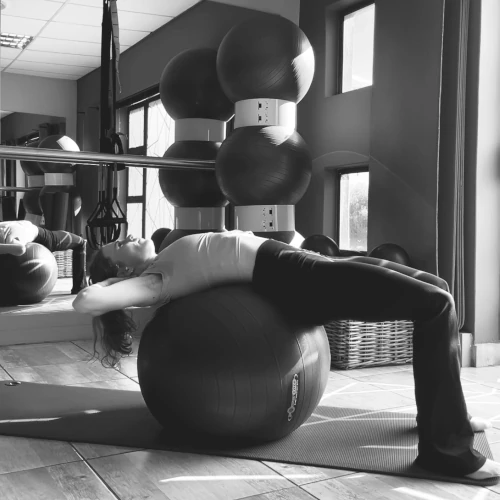Lower Back Pain Isn’t Just About the Back - It’s a Full-Body Story
Over the past few weeks, I’ve had a number of clients come in with lower back issues - and I think it’s the perfect time to have some honest, real-talk about where that pain is really coming from.
It’s easy to assume lower back pain is just a “back problem.” But more often than not, it’s simply the symptom - not the root cause. The reality? Back pain is rarely isolated. It’s layered, holistic, and deeply connected to the rest of your body.
I see it all the time: recurring tension, discomfort, or stiffness in the lower back. While it can stem from the spine, the majority of cases are the result of full-body imbalances - tight hips, underactive glutes, stiff upper backs, poor core engagement, high stress levels, or years of sedentary habits. It all adds up.
Your Body Works as a Team - When One Part Checks Out, Another Overcompensates
Pain is often the last signal - the fire alarm, not the fire.
When your glutes stop firing, your lower back takes over the load.
When your core lacks stability, your spine absorbs the strain.
When your hips are tight, they pull your pelvis forward, misaligning your lower back.
These imbalances can simmer quietly until your back finally “speaks up.” But it doesn’t mean you’re broken - it means your body is asking for support and balance.
It’s Not Just Physical
Lower back pain can be emotional, too. Chronic stress and anxiety create real, physical tension - especially in your diaphragm, hip flexors, and lower back. How we breathe (or forget to), how we hold stress, and how we store emotion in our tissues deeply affects our physical wellbeing.
If your body’s been living in a prolonged state of mental or physical tension, your back may be bearing the weight - literally.
When to Seek Professional Help
While many back issues can improve with awareness, movement, and consistency, there are red flag symptoms you should never ignore. These may indicate a more serious medical condition:
- Pain radiating down your leg (especially past the knee)
- Numbness, tingling, or weakness in your legs or feet
- Loss of bladder or bowel control
- Unexplained weight loss with persistent back pain
- Pain that worsens at night or doesn’t improve with rest
- Morning stiffness lasting longer than an hour
- History of trauma (fall, accident) with ongoing pain
If any of these apply, please don’t just try to “stretch it out.” Consult a healthcare professional. Early intervention is key.
So, Where Do You Start?
Start by zooming out and asking the bigger questions:
- How are you sitting during the day?
- Are you breathing deeply and effectively?
- Are your hips mobile? Are your glutes working?
- Is your core offering support?
- Are you overusing certain muscles to compensate for others?
Relief won’t come from just foam rolling or doing “back” exercises. Instead, it requires a holistic approach - reconnecting with your body, understanding your patterns, and gradually restoring balance through intelligent, mindful movement.
The Power of Movement, Awareness & Patience
There’s no quick fix - but there is real power in consistency.
This is where rehab and Pilates come in. We don’t just treat the pain - we build the foundation your body needs to prevent it. We reintroduce balance, coordination, and control. Layer by layer. From the ground up.
It’s a shift in mindset:
From “I have back pain” → to “What does my body need to feel supported?”
Because it’s never just about your back - it’s your posture, habits, movement patterns, breath, and even your mindset.
Final Thought
Start small. Stay consistent. Ask better questions. And remember: you don’t need to fix everything at once… and you definitely don’t need to do it alone.
Chat soon.
Dani


